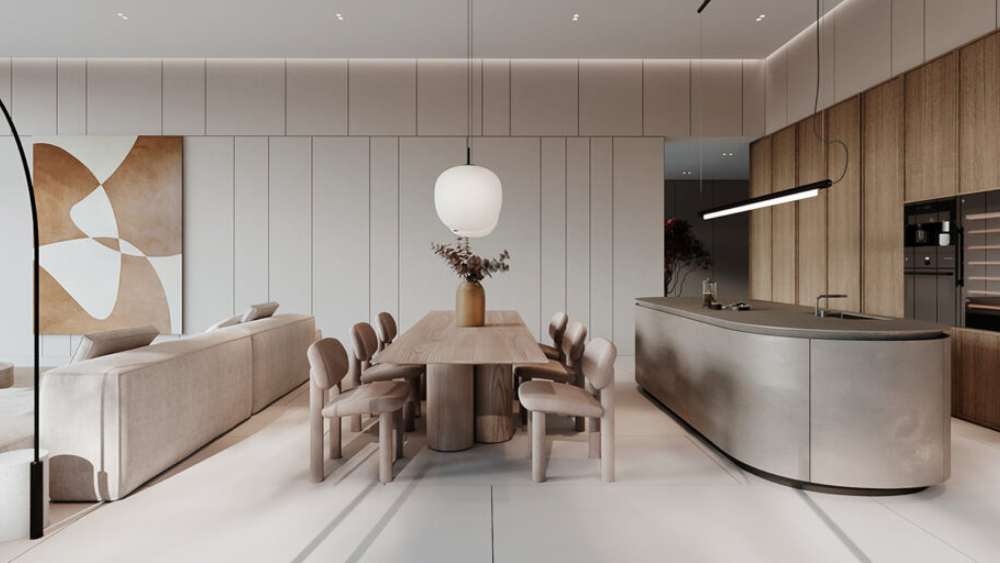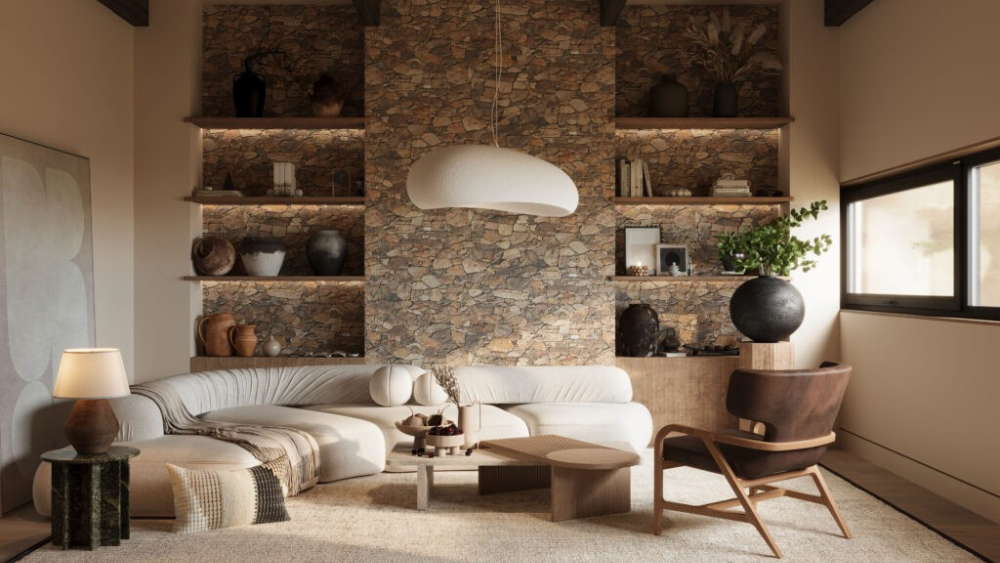Japandi dining rooms blend Japanese minimalism and Scandinavian functionality, creating a serene and harmonious space. Here's what you need to know :
- Natural elements and neutral tones are key
- Furniture features clean lines and minimalist aesthetics
- Artisanal touches add character and embrace wabi-sabi philosophy
- Balance is crucial for achieving harmony
- Less is more - carefully curate each element
The Japandi dining room trend has taken the interior design world by storm, offering a perfect blend of Japanese minimalism and Scandinavian functionality. This fusion creates a serene and harmonious space that celebrates simplicity, natural elements, and thoughtful design. Let's explore how to bring this captivating style into your home, transforming your dining area into a tranquil oasis.
Embracing natural elements and neutral tones

At the heart of Japandi design lies a deep appreciation for nature and its calming influence. To create an authentic Japandi dining room, start by incorporating natural materials, particularly light woods such as oak or ash. These materials not only add warmth but also bring a sense of the outdoors inside.
The color palette for a Japandi dining space should be soft and muted, featuring soothing tones like beige, gray, and white. This neutral backdrop allows the beauty of natural textures to shine through while creating a serene atmosphere. To add depth and interest, consider incorporating subtle contrasts with dark accents.
Here's a list of natural elements to consider for your Japandi dining room:
- Wooden japandi dining table and chairs
- Bamboo or rattan accents
- Linen tablecloths and napkins
- Woolen japandi rugs
- Ceramic dishware and vases
- Indoor plants or nature-inspired décor
To further enhance the natural ambiance, maximize natural light in your dining area. Large windows or sliding glass doors can create an airy atmosphere, blurring the lines between indoor and outdoor spaces. If privacy is a concern, consider using sheer curtains or sliding shoji screens, which allow light to filter through while maintaining a sense of seclusion.
Furniture and lighting: Simplicity meets functionality

When selecting furniture for your Japandi dining room, prioritize clean lines and minimalist aesthetics. Opt for pieces that showcase craftsmanship and artisanal elements while maintaining a focus on functionality. Low-profile dining tables and chairs are quintessential to this style, creating a grounded and intimate atmosphere.
Here's a comparison of traditional dining room furniture versus Japandi-inspired pieces:
| Traditional | Japandi |
|---|---|
| Ornate, high-backed chairs | Low-profile, curved-back chairs |
| Heavy, dark wood tables | Light wood tables with clean lines |
| Elaborate china cabinets | Open shelving or minimalist sideboards |
| Crystal chandeliers | Globe pendant lights or lanterns |
Lighting plays a crucial role in creating the right ambiance in a Japandi dining room. Layered lighting is key, combining natural, ambient, and task lighting options. Consider installing dimmable fixtures to adjust the mood as needed. Globe pendant lights or paper lanterns can serve as beautiful focal points while providing soft, diffused light.
To maximize space and maintain a clutter-free environment, incorporate hidden storage solutions into your dining area. Look for sideboards or credenzas with sleek, minimalist designs that offer ample storage space for dinnerware, linens, and other dining essentials. This approach helps maintain the calm and organized atmosphere that is central to Japandi design.
Artisanal touches and wabi-sabi influence

The Japandi style celebrates imperfection and authenticity, drawing inspiration from the Japanese concept of wabi-sabi. This philosophy embraces the beauty of imperfection and the passage of time, adding depth and character to your dining space.
Incorporate handmade elements and artisanal pieces to bring this concept to life in your Japandi dining room. Consider the following ideas:
- Display handcrafted ceramic dishware or sculptures
- Use textured, handwoven placemats or table runners
- Hang artwork featuring nature themes or abstract minimalism
- Showcase unique, one-of-a-kind wooden serving boards
- Integrate asymmetrical or slightly irregular vases and planters
These artisanal touches not only add visual interest but also create a sense of warmth and individuality in your dining space. The imperfections in handmade items tell a story and contribute to the overall character of the room.
To further enhance the wabi-sabi influence, consider incorporating kintsugi pieces into your décor. This Japanese art of repairing broken pottery with gold or silver lacquer embraces flaws and transforms them into beautiful, unique features. A kintsugi bowl or plate can serve as a stunning centerpiece or conversation starter in your Japandi dining room.
Creating balance and harmony

The essence of Japandi design lies in achieving a perfect balance between different elements. This harmony is crucial in creating a dining space that feels both inviting and serene. To achieve this balance, consider the following tips:
- Mix textures: Combine smooth surfaces with rougher textures to add depth and interest. For example, pair a sleek wooden table with textured linen placemats or a woolen rug.
- Blend warm and cool tones: While maintaining a neutral palette, incorporate both warm wooden tones and cooler elements like concrete or metal accents.
- Contrast shapes: Combine organic, curved shapes with more angular, geometric forms to create visual interest without clutter.
- Balance open and closed storage: Use a mix of open shelving and closed storage solutions to display select items while keeping others hidden.
- Incorporate negative space: Allow for areas of emptiness in your design to create a sense of calm and prevent visual overwhelm.
Remember that in Japandi design, less is often more. Carefully curate your dining room elements, ensuring that each piece serves a purpose and contributes to the overall aesthetic. This thoughtful approach will result in a dining space that feels both intentional and effortlessly stylish.

By embracing the principles of Japandi design in your dining room, you can create a space that not only looks beautiful but also promotes a sense of tranquility and mindfulness. This harmonious blend of Japanese and Scandinavian aesthetics offers a timeless approach to interior design, allowing you to enjoy meals and gatherings in a serene, welcoming environment for years to come.



Leave a comment
This site is protected by hCaptcha and the hCaptcha Privacy Policy and Terms of Service apply.